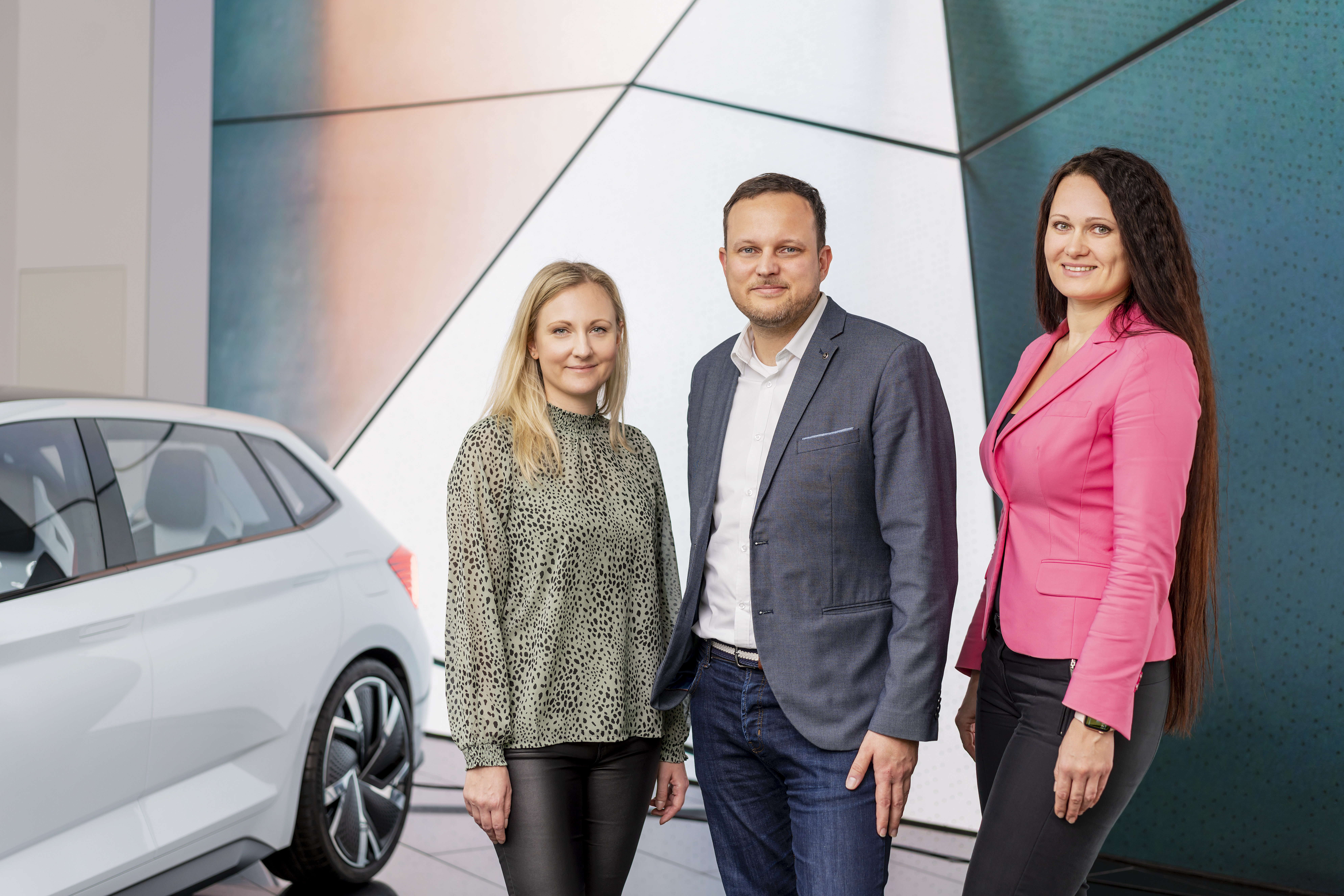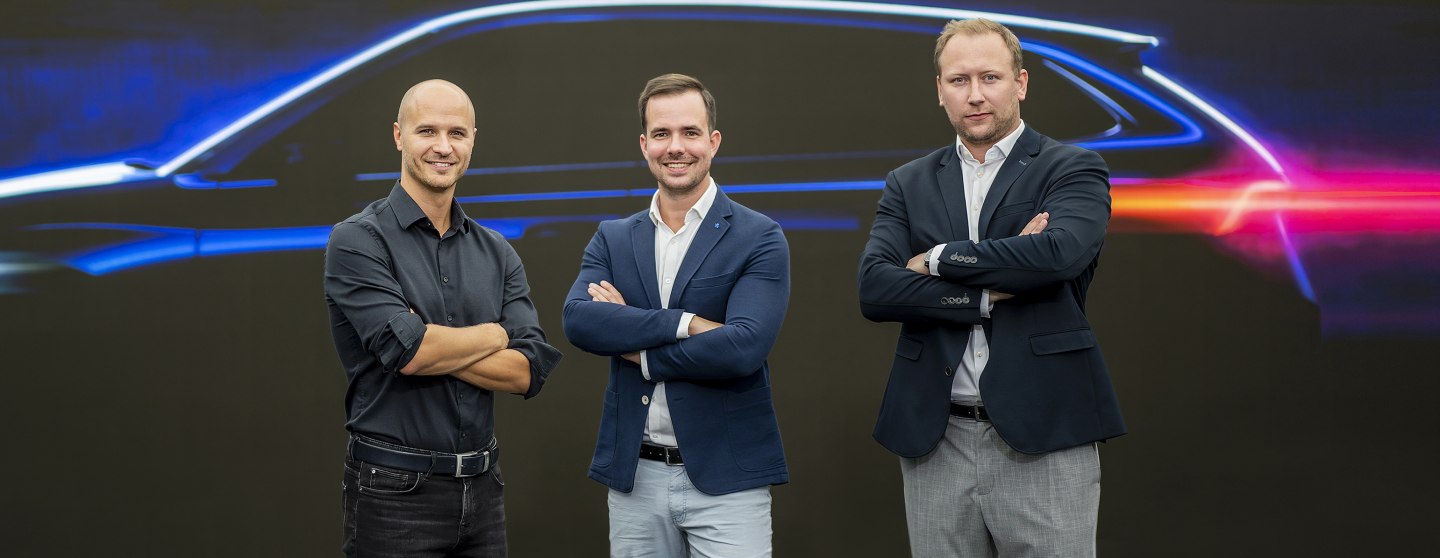The cherry on the cake
In addition to new models, one specific task is working on concept cars for international exhibitions and trade fairs, which are known as “show cars”. “This is the cherry on the cake we all enjoy, but it’s also much more intense. While we work on a production car for four years, a show car concept has to be completely finished in six to nine months,” explains Petr Basler. His words are confirmed by Martin Porteš, who worked on the ŠKODA VISION RS concept, for example. “Working on a concept is exciting but demanding. In a way, the practical boundaries of the worlds of technology and finance are set aside in this case, and we can try something new that we wouldn’t normally do. But it all happens very quickly,” says Porteš.
 Project managers Martin Porteš, Radim Klucho and Róbert Boslai
Project managers Martin Porteš, Radim Klucho and Róbert Boslai
Normally, preparing the final appearance of a car takes longer than work on concepts, but the intensity is not all that different. “It’s more that we have something of a fixed routine with production cars. We’re used to a huge amount of changes in the early stages where designers can let their creativity run wild – it’s only when the technical specifications of many details start to be finalised that the fine-tuning comes in,” Porteš explains. Sometimes it’s a seemingly endless loop of adjustments, but sometimes it all proceeds more quickly. “Recently, for example, we managed this on a project for India, where there was an unexpected congruence between technology and design from the start. We defined and selected the design quite quickly, the technical and emotive aspects went without a hitch and everyone had a lot of fun working on the project,” Porteš says.
Seeing the final car at its presentation is a big moment for any design manager. Whether it’s a production car or a concept car, where the satisfaction is all the greater because the stress of several months of intense work has suddenly disappeared. “There is no better feeling than seeing a concept completed for the first time in our hall. And then seeing it arrive on stage at the world premiere...” smiles Martin Porteš. Before this can happen, though, the car has to go through a series of approval processes.
 Specialists Petr Hynek, Jan Trnka, Zuzana Ježková and their boss Petr Basler
Specialists Petr Hynek, Jan Trnka, Zuzana Ježková and their boss Petr Basler
That makes it necessary to prepare presentations of the cars, whether for the ŠKODA management or the Group’s board of directors. Graphic designer Petr Petzet is a specialist in the design management team. His job is not only to prepare the presentation files, but also to prepare the car. For example, Petr Petzet was responsible for preparing the cars for the photo shoot staged for this article. “The form in which we present the car is becoming more and more important. The presentation must be up-to-date in terms of both style and content, and the car has to be shown in such a way that inspires interest and excitement among the board members, for example,” explains Petzet.
That’s why the most important presentations continue to use physical car models. “Giant projection walls, virtual reality and other modern technology help us a lot and allow us to generate a great atmosphere, but the physical model always has the biggest impact,” Petzet emphasises. This is because cars have very complex shapes, which the human eye and brain absorb a little differently in a virtual environment and in the real world.







































